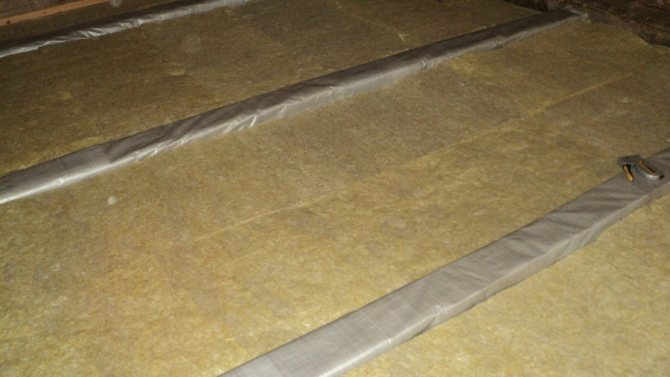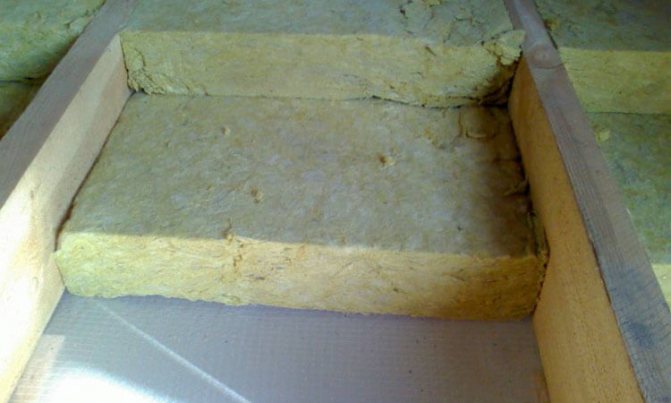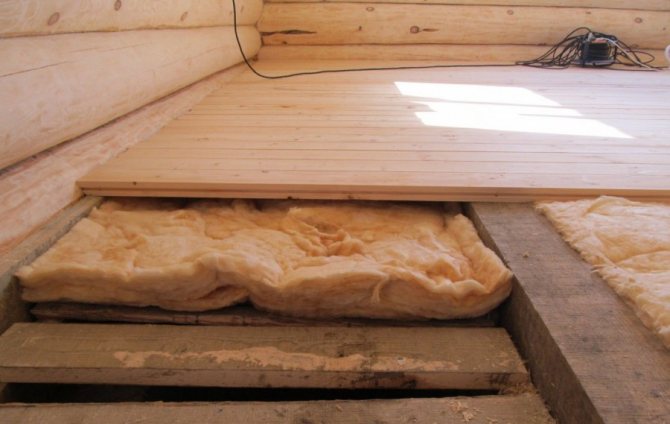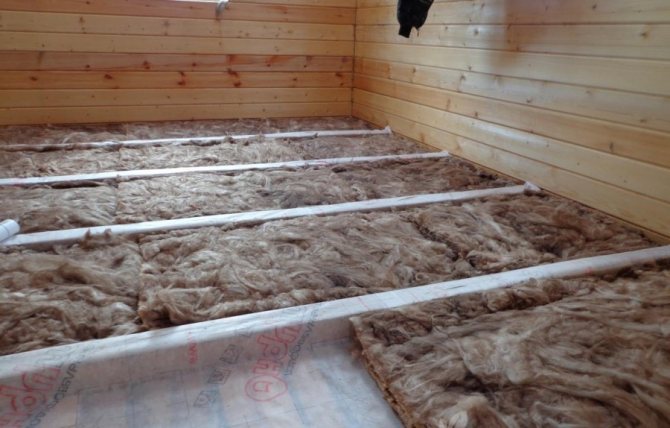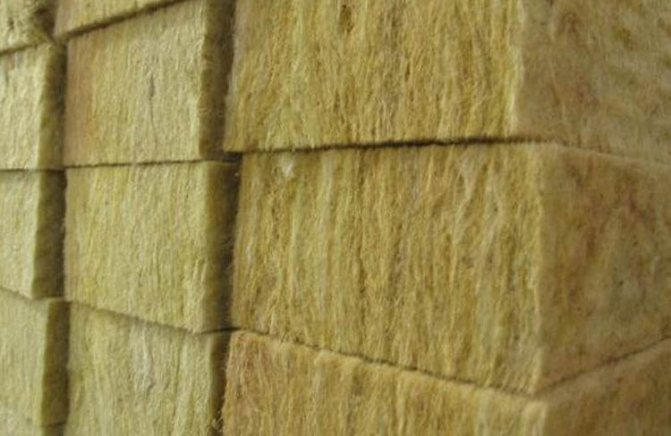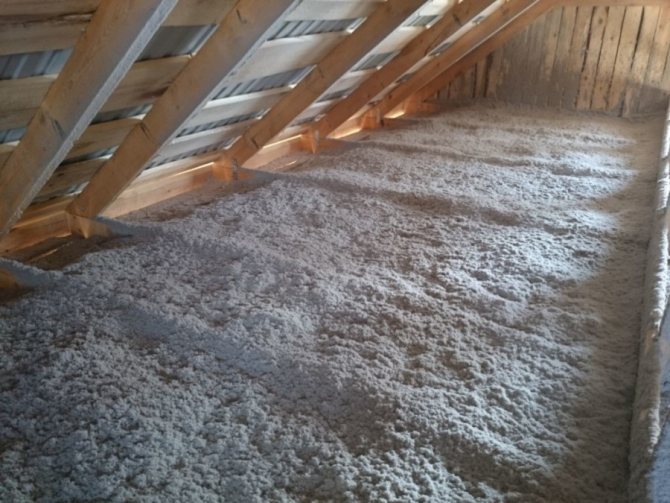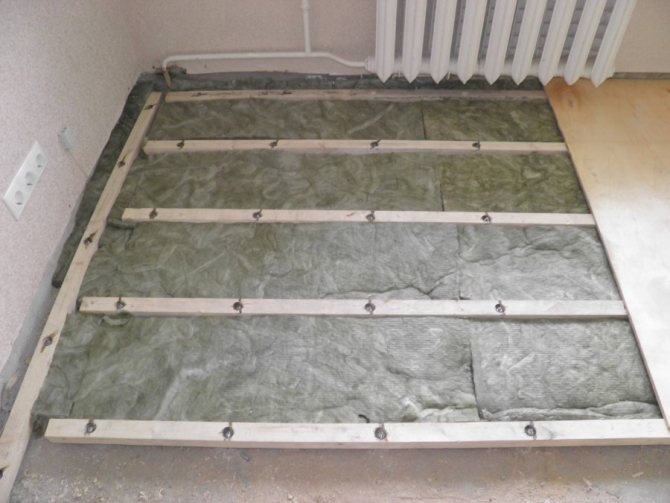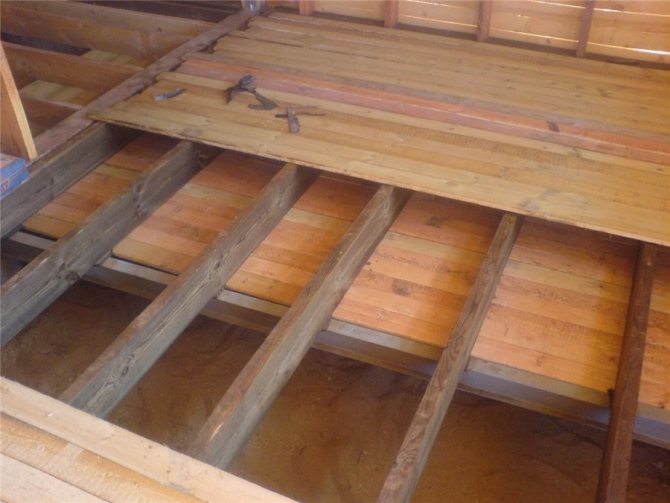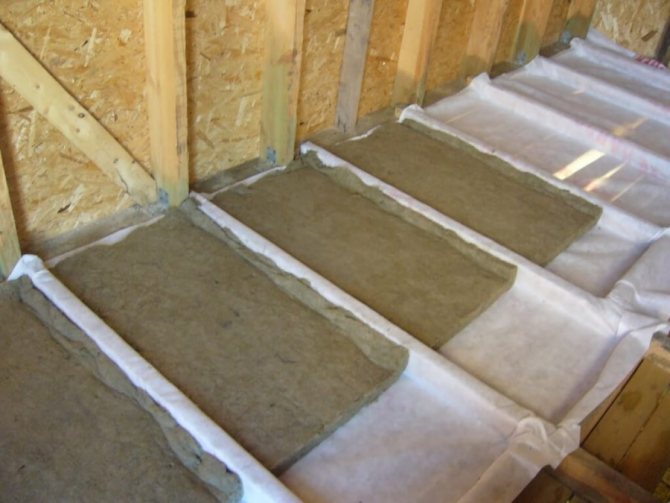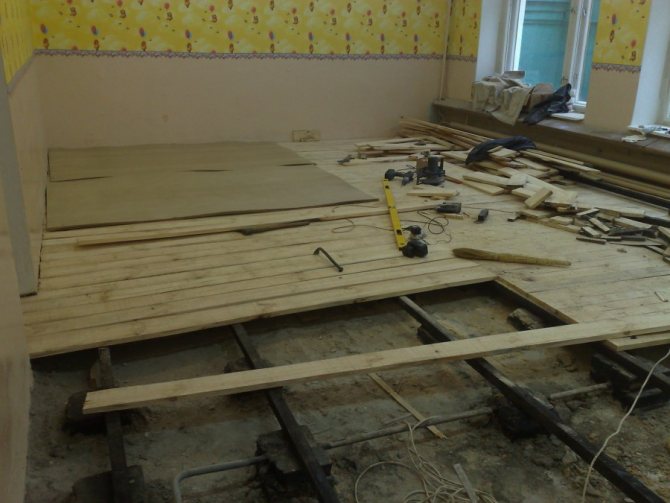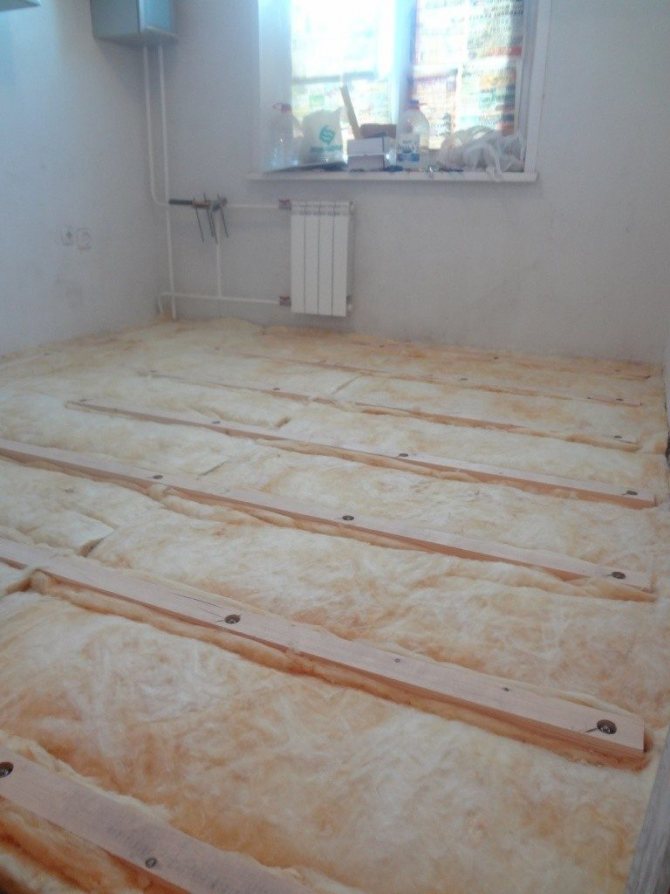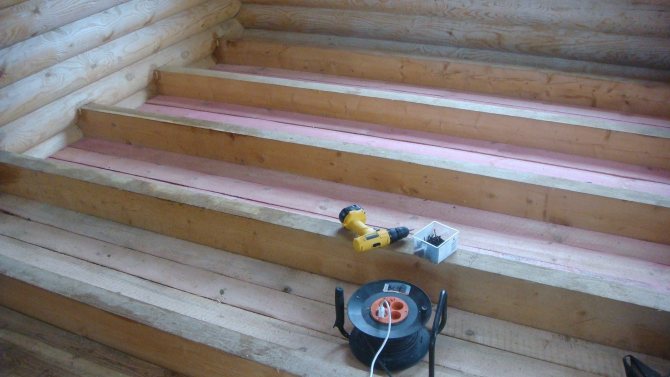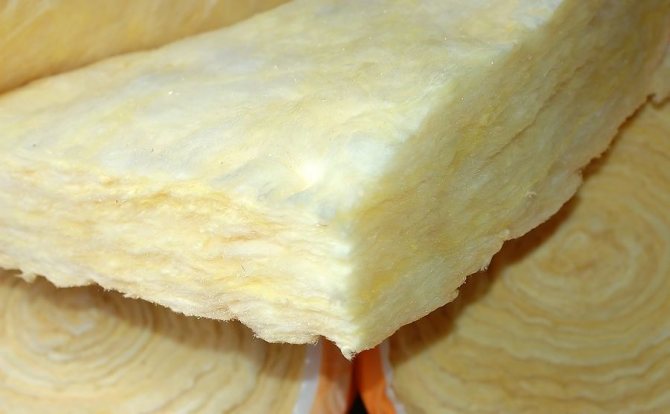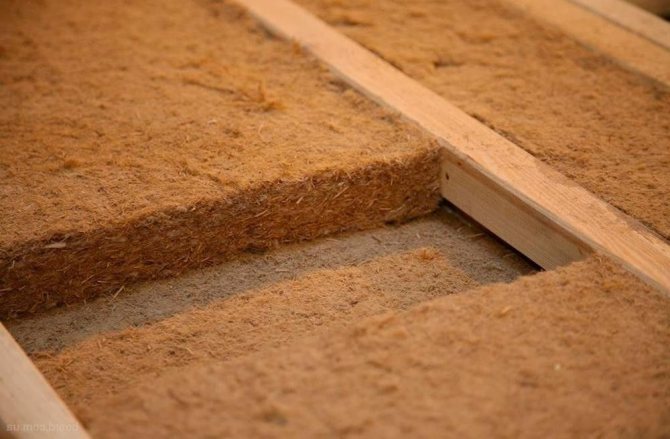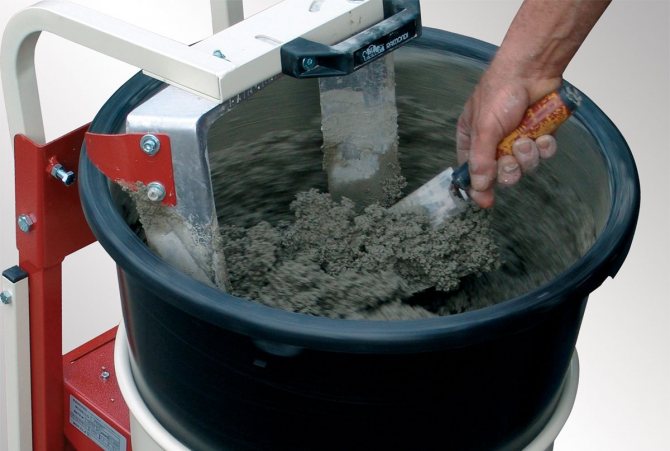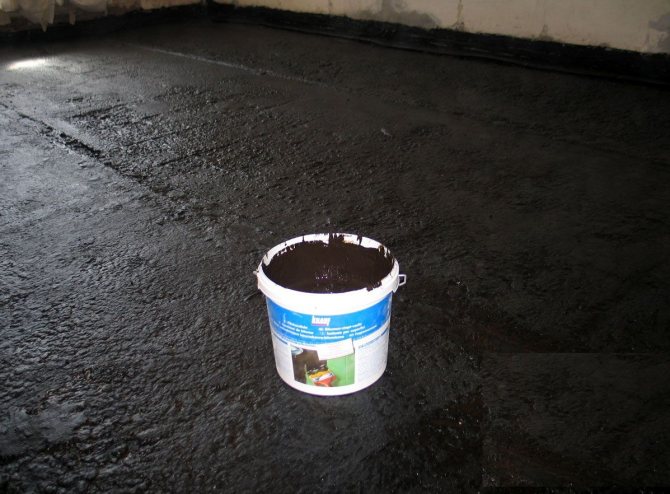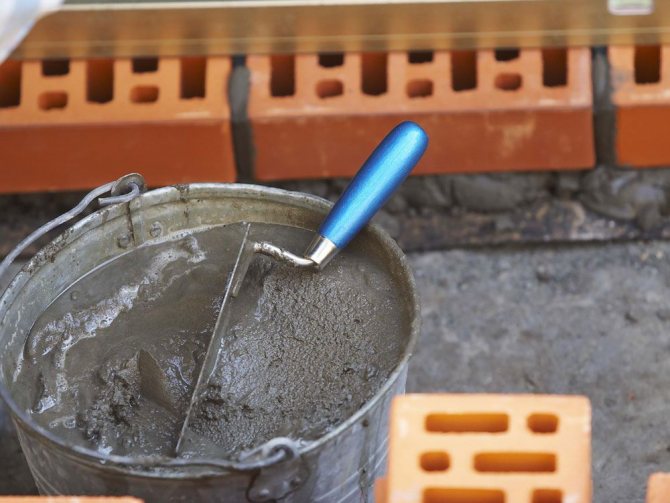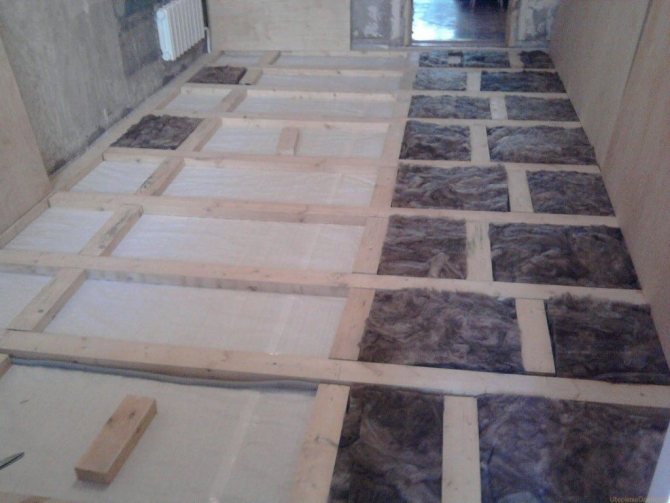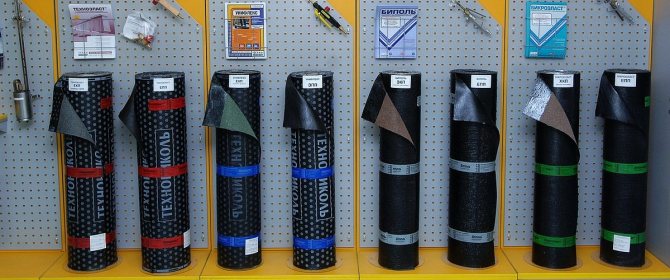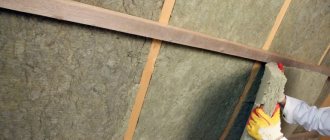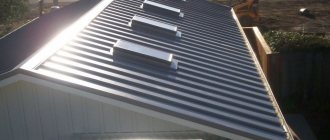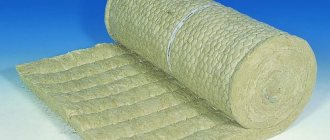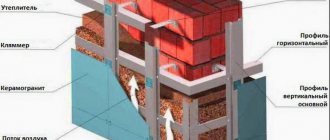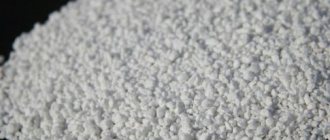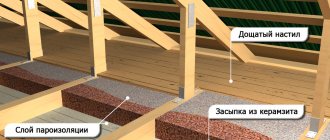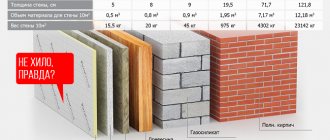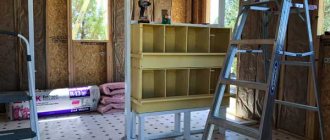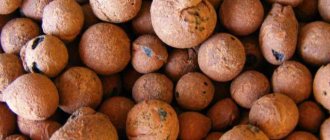The most important stage of finishing any room is floor insulation. Many people underestimate the amount of heat loss through the floor, but a properly selected insulation can save up to 30% of energy on heating. Especially great savings are achieved when using a floor heating system, which simply needs to be insulated from below so that it does not heat the floor or the ground.
Floor insulation thickness
Choosing the type of insulation that best suits your space is only half the battle. It is important that the insulation layer is of sufficient thickness, because even the best insulation will not provide sufficient thermal insulation if it is installed in too thin a layer. On the other hand, an unnecessarily thick layer of insulation reduces the height of the ceilings in the room and is an unjustified waste of money.
Thermal conductivity of some heaters
It is important to understand that the required thickness of the insulation depends on the climatic conditions in your area. Obviously, when using the same insulation in houses of the same type in Sochi and Norilsk, completely different layer thicknesses will be required. Therefore, it should be borne in mind that all the recommendations in the article are given for a typical climate in central Russia, where the temperature in winter rarely drops below -25 degrees. If you live in a milder or harsher climate, then the recommendations need to be adjusted up or down.
Let's consider the main types of thermal insulation and the required layer thickness when used in various types of floors.
Calculation of the thickness of the insulation for underfloor heating systems
Styrofoam
Usually this word is called foamed polystyrene and extruded polystyrene (penoplex). In terms of chemical composition and thermal insulation properties, these materials practically do not differ, however, penoplex has a much higher bending strength and resistance to crumbling than traditional foam. For this reason, in recent years, most consumers are abandoning expanded polystyrene (foam) in favor of extruded polystyrene (foam).
The advantage of this type of thermal insulation is its low price, ease of installation and moisture resistance. The disadvantages include the flammability of this material, and when polystyrene burns, a large amount of toxic substances is released.
Polystyrene plates are produced with a thickness of 5 mm to 50 mm, a special chamfer is made on the edges of the plates, so that no gaps appear at the joints during installation, and therefore “cold paths”.
If a layer thickness of more than 50 mm is required, then two or even three layers of polystyrene are laid, while each new layer is laid with an offset relative to the previous one, so that the joints of the plates of the upper row fall on the centers of the plates of the lower one.
Screed with foam
When insulating a floor located directly above the ground, the foam layer must be at least 300 mm for a house with a wooden floor, and 200 mm for a house with self-leveling concrete floors. You should install at least 4 layers of the thickest foam panels offset from each other.
If there is a cold basement under the floor, the foam layer can be reduced by 50mm.
To insulate the floors between the floors of a private house, 150 mm of foam is enough for wooden floors and 100 mm for concrete floors.
If you are insulating floors in an apartment building, then for all floors, except for the first one, it is enough to lay one layer of foam plastic 50 mm thick. On the ground floor, the thickness can be increased to 80-100 mm.
| Indicator | Polispen | Polispen Standard | Polispen 45 | Control method |
| Density, kg / m3 | 30-38 | 30-38 | 38,1-45 | by 5.6 |
| Flexural strength, MPa, not less | 0,4 | 0,4 | 0,4 | by 5.8 |
| Water absorption in 24 hours,% by volume, no more | 0,4 | 0,4 | 0,4 | 5.9 each |
| Thermal conductivity at 25 + -5 degrees Celsius, W / m * ° C, no more | 0,028 | 0,028 | 0,030 | 5.10 each |
| Toxicity, Hcl 50, g / m3 | T2 moderately dangerous | T2 moderately dangerous | T2 moderately dangerous | by 5.11 |
| Flammability group | G-3 normally combustible | G-4 highly flammable | G-4 highly flammable | 5.12 each |
| Flammability group | B-2 moderately flammable | B-3 flammable | B-3 flammable | by 5.13 |
| Smoke production coefficient | High smoke generating ability | High smoke generating ability | High smoke generating ability | 5.14 each |
| Compressive strength at 10% linear deformation, MPa, not less | 0,2 | 0,2 | 0,3 | by 5.7 |
Estimated thickness of thermal insulation Penoplex
Advantages and disadvantages of insulation
Insulation with cotton wool is an excellent option for residential and non-residential premises. It is profitable and convenient. Vata makes it possible:
- save on materials when building a house;
- save on work - construction is easier;
- increase the usable space in the room.
The advantages of the material should also include:
- fire resistance - the coating can withstand heating temperatures up to 1000 degrees without losing its qualities;
- minvata is a good sound insulator;
- affordable cost compared to other insulation materials;
- during the operation time, you will not have to change the material;
- ease of the installation process.
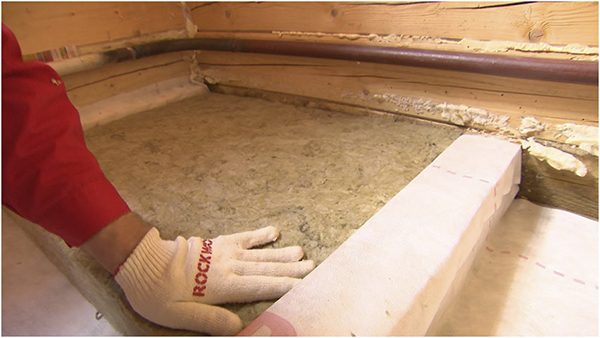
Material characteristics
But mineral wool as a heater has some drawbacks. One of the most important is good absorbency. Because of this, you should not lay the product in rooms with high humidity, and in order to prevent swelling, additional laying of vapor barrier from below and waterproofing from above is required.
Among the main disadvantages are the following:
- Despite the fact that the material is environmentally friendly for the human body, dusty clouds may appear when shaken, it is not advisable that they enter the respiratory system. For this reason, during the installation process, the use of respiratory masks is mandatory. Allergy sufferers and asthmatics should be especially attentive to this issue.
- It is forbidden to use cotton wool in catering places, but many owners of such establishments neglect this condition.
- Insulation increases the load on the overall structure.
- Cold bridges can form at the joints of the coating. It is better to seal them up additionally to avoid heat leakage from the room.
Penoizol
This is a liquid version of foam that has the same pros and cons as the solid version. Its advantage is that it can be poured into hard-to-reach places and, after hardening, forms a monolithic coating without seams.
The disadvantages include the fact that you need to think about the method of supplying penoizol for pouring, on high floors this can be a problem. In most cases, penoizol is used at the stage of construction of private houses; when insulating floors in apartment buildings, it is more convenient to use polystyrene and penoplex.
The required thickness of the foam insulation layer is the same as that of solid foam.
What is mineral wool for flooring?
Recently, mineral wool has been supplied in the form:
- - solid standard slabs intended for laying on a primed surface;
- - rolls of various widths;
- - flexible mats.
If everything is clear from the rolls, then it is worth dwelling on flexible mats and plates in more detail.
Very often, plates are produced with double-sided rigidity, from hydrophobized components. During installation, observe the instructions for use, since one of the surfaces is harder and fits to the top. Special markings, usually in blue, will help to avoid mistakes.
Most flexible mats are made on the basis of hydrophobized mineral wool, one side of which is perforated with kraft paper. According to the manufacturer's recommendations, the laminated surface should face the space to be insulated.
Glass wool and mineral wool
An example of floor insulation with mineral wool
Perhaps this is one of the most budgetary options for thermal insulation. In addition to the low price, cotton wool does not burn at all and has good vapor permeability, therefore it is excellent for insulating wooden floors. This is where the advantages of this material end. The disadvantages include the fact that cotton wool tends to accumulate moisture in itself and this causes rotting and mold growth, the second disadvantage is that over time, the cotton wool crumbles if the insulation layer under the floor is not tightly closed, as a result, fiber particles can pass through the finish coating get into the air and irritate the respiratory tract. Also, cotton wool has a very low strength, easily breaks and deforms, which makes it impossible to use it under a concrete screed.
Rigid mineral wool slabs are recommended for floor insulation on the ground.
Despite the disadvantages, mineral wool is widely used as a heater, usually in wooden floors.
Most manufacturers produce glass wool and mineral wool in rolls or sheets, with a thickness of 50 to 200 mm. Sheets can be stacked in several layers with offset joints for better thermal insulation.
For the application of mineral wool on ground floors above the ground, very good waterproofing is required. Cotton wool instantly absorbs moisture, after which it loses its insulating properties. For this reason, it is better to use foam for thermal insulation of the first floors. If for some reason it is nevertheless necessary to use mineral wool, then its layer should be at least 400 mm.
Multi-layer installation of insulation
If there is a basement under the ground floor, a 300 mm layer of mineral wool is sufficient.
When insulating wooden floors between the floors of a private house, the wool layer should be at least 200 mm, and in the wooden floors of apartment buildings, a thickness of 100 mm is sufficient.
| Name | Benefits | Minuses | Thermal conductivity |
| Sawdust | Low-cost, eco-friendly material, lightweight | Flammability, susceptibility to decay | 0.090-0.180 W / mK |
| Expanded clay | Eco-friendly, durable material, non-rotting, non-flammable | Great weight, fragility | 0.148 W / mK |
| Styrofoam | Does not rot, is waterproof, lightweight and easy to install | Low vapor permeability, does not withstand high temperatures, releases toxins when melted | 0.035-0.047 W / mK |
| Mineral wool | Low thermal conductivity, easy to install, environmentally friendly, fireproof | When moistened, it shrinks and loses its insulating properties | 0.039 W / mK |
Sequencing
Thermal insulation of the floor with mineral wool is part of a multi-stage process for installing the floor, which is carried out according to the following algorithm:
- Alignment. The surface on which the floor will be laid must be perfectly flat;
- Vapor barrier - laying a layer of vapor barrier material;
- Installation of guides - wooden logs;
- Insulation laying - filling each m2 of floor with insulation material;
- Laying the flooring is the last, finishing layer of the cake.
Actually, this whole process is carried out in order to ensure reliable insulation and waterproofing of the room. Therefore, it makes no sense to consider laying mineral wool separately from the other stages.
Alignment
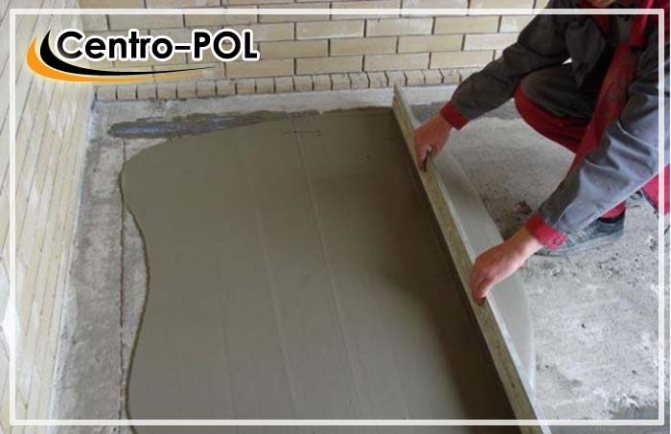

Leveling the concrete base with a screed
Leveling is especially important when laying the ground floor on the ground. In floor slabs, there are also irregularities and cracks.To eliminate irregularities in the first case, it is necessary to level the surface of the soil with a layer of crushed stone 10 cm thick, on which it is necessary to fill in a layer of sand of the same thickness.
You should know. When laying the floor on reinforced concrete floor slabs, a leveling screed is usually used. The screed is usually used concrete or cement-sand. The absence of a screed can lead to the destruction of the entire floor due to irregularities and the associated uneven load on different parts of the floor surface. This circumstance forces to arrange a screed even in the attic.
Vapor barrier
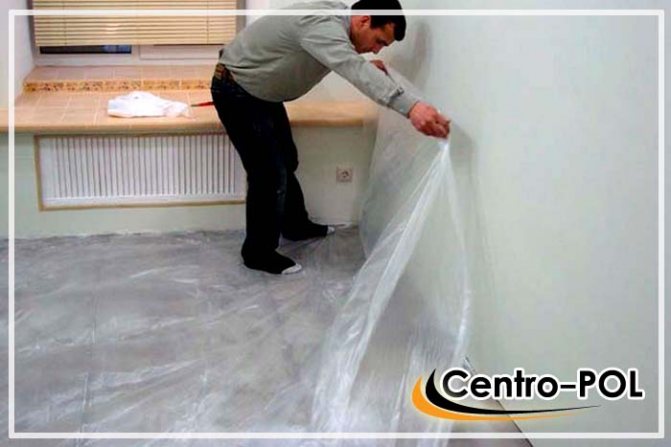

Laying the vapor barrier film on the screed
A layer of vapor barrier on top of the screed must be laid in the floors of the premises on the first floor for each m2 of surface. This is necessary precisely when used as a mineral wool insulation. Mineral wool easily dampens, which leads to a decrease in its thermal insulation properties. Also, when laying the topcoat, it is important to observe the ventzaor between the mineral wool and the floor surface.
Roofing material can be used as a vapor barrier - such material is best used in the country, where the requirements for the floors are mainly limited by the price of materials and all work is done by hand. Film waterproofing is used as modern and reliable materials for vapor barrier:
- polyethylene film, including coated with aluminum;
- polypropylene film;
- vapor barrier membranes.
Most often, polyethylene, polypropylene or aluminum coated film are used. This is primarily due to the cost of the material. However, the effectiveness of such a material is low, due to the possibility of condensate accumulation on its surface. This can lead to wetting of the mineral wool and, consequently, a decrease in its thermal insulation properties.
The most modern and reliable material is thick multi-layer vapor barrier membranes made using a more sophisticated technology using many waterproofing materials. They are best used in country houses and cottages.
Warming of floors with expanded clay
The vapor barrier layer is laid as evenly and tightly as possible to the surface of the floors and walls. In this case, there should be no ventilation gap. The holes in the lower layer of the vapor barrier will not lead to ventilation, but to the appearance of moisture on the insulation layer. This principle is maintained on all floors, including the attic.
Warming
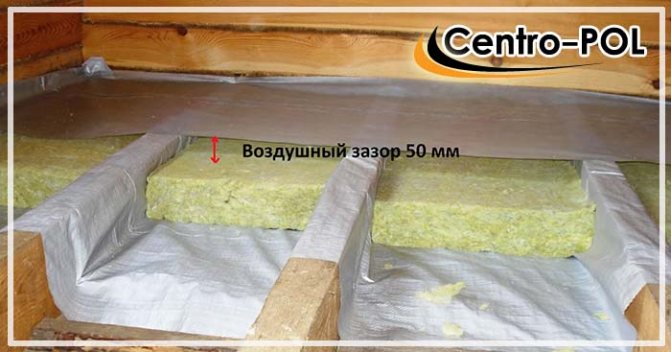

A vivid example of floor insulation on logs
Mineral wool is placed on the first layer of vapor barrier. A roll of mineral wool is unwound and laid in such a way as not to leave ventilation gaps between the wool and the logs, as well as between the wool and the first layer of vapor barrier, no ventilation gap in order to avoid the accumulation of moisture on the mineral fiber.
This prevents the fiber from getting wet and the mineral wool loss of its heat-insulating properties. The technology provides for the installation of special ventilation gaps between the insulation and the second layer of vapor barrier.
The thickness of the mineral wool sheet is selected depending on the purpose of the building and climatic conditions. So, at the dacha, used mainly only in the warm season, it is enough to use mineral wool 50 mm thick. The same applies to technical buildings and houses in the southern regions, where it is still impossible to do without insulation, despite the milder climate. The thickness of the sheets of mineral wool used on the second and third floors, in the attic or in the attic may also not exceed 5 cm. This is due to lower requirements for floor insulation on the floors, as well as the need to preserve the volume of the room.
For your information. In private country houses, it is better to use cotton wool 200 mm thick. Wool of this thickness will provide reliable thermal insulation.
Having laid a layer of mineral wool, it is necessary to lay another layer of vapor barrier on top of it. This is especially important when installing the floor in the attic of a house or summer cottage.However, here the laying technology will be somewhat different than in the first layer. To ensure ventilation in order to avoid the accumulation of moisture on the insulation layer, the technology provides for the device of ventilation gaps - special holes between the sheets of the vapor barrier film, through which air will pass and moisture that has got under the vapor barrier will evaporate. Ventilation gaps are required between all sheets of film or membrane.
Ecowool
This material is very similar in its characteristics to mineral wool, but it is made of cellulose fibers, therefore it is absolutely safe for health. Just like mineral wool, ecowool is afraid of water and is easily deformed. Therefore, in most cases, it is used to insulate wooden floors between floors.
The big advantage of ecowool is that it is laid by spraying under pressure from a special pipe. Thus, the insulation can be “blown out” under the already assembled floor, for this it is only necessary to make a few small technological holes.
The required thickness of the ecowool layer corresponds to the thickness of the mineral wool layer, all other things being equal.
Basalt and ecowool characteristics
Cork material
The main advantage of natural cork insulation is the extremely high sound insulation of the coating. The high cost of the material is compensated by the fact that you simultaneously solve the problem of heat and sound insulation. In addition, cork insulation almost does not burn, is not afraid of moisture, is resistant to decay and is extremely durable, which allows it to be used as insulation under self-leveling floors.
Due to the rather beautiful texture, cork insulation is sometimes left even as a topcoat. In this case, the top layer is covered with a special varnish that protects it and at the same time emphasizes the pattern.
Cork insulation is produced in rolls and sheets with a thickness of 3 mm to 200 mm. Sheets of maximum thickness allow you to insulate floors above the ground in just one layer, but at the same time they are very expensive. The cost per square meter of thick cork insulation can be up to 5,000 rubles. For this reason, cork insulation on the first floors of buildings is rarely used.
Thermokork cork insulation
The thickness of cork insulation on the first floor of a private house with concrete floors must be at least 100 mm, in the floors between floors with concrete floors, a layer of 50 mm is sufficient, if the floors are wooden, then the layer must be increased to 70 mm. In an apartment building, cork insulation is laid with a layer of 10 mm to 30 mm, this is quite enough for effective thermal insulation and complete sound insulation from neighbors below.
Video - Cork insulation
Surface preparation
Mineral wool for floor insulation is laid on all existing surfaces, such as:
- Ground surface with wooden floor structures on joists. The logs are laid directly on the ground, and any wooden forms are attached to them on top. In this case, you first need to fill the bottom with expanded clay. The next layer is waterproofing. Then cotton wool of any format is laid: rolls, plates, mats. And this whole layer cake is covered with a vapor barrier sheet. Now you can start installing the concrete screed. The more layers are laid, the warmer the floor will turn out, moisture will not be able to penetrate into the dwelling.
- The deeper structure is the brick pillars on which the logs are laid. This technology is used in private country houses. Expanded clay is filled up to the upper level of the pillar. Now you need to make the structure - along the entire length of the log we fill the boards in the form of a lattice. We cover the waterproofing on top of the wood, overlapping the logs of about 5 - 6 cm. Cut the vapor barrier film into tapes and lay the entire surface in layers, re-gluing the joints with foil tape.The canvases should be 2 cm on top of each other, we do the same at the edges. In order to save money, you can use ordinary plastic wrap. We begin to mount the screed and the final floor.

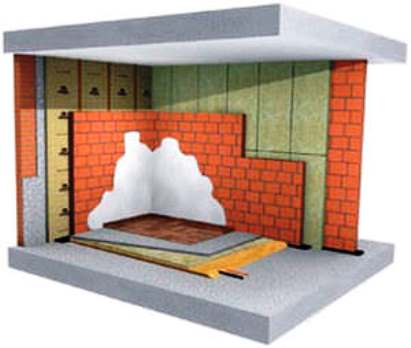
House insulation principle - It's a pleasure to work with concrete! These can be slabs - bases in an apartment or a rough screed. The insulation of the floor with mineral wool will be in one layer, since the floor level will rise high enough. We lay the vapor barrier sheet with foil to the floor. You can make a lathing of wooden blocks and insert mineral wool slabs into these edging. But you can do without them. The mineral wool slabs are dense and there will be no feeling as if you are walking on the mattress. After the slabs have been laid, a layer of vapor barrier sheet is laid with the foil facing up.
Polystyrene concrete
This is a relatively new material for insulation, it combines the strength of concrete and the lightness of polystyrene. The material has excellent heat and sound insulation properties and at the same time is a strong screed. It is ideal for thermal insulation of large rooms, since it is very easy to pour and level, a team of experienced craftsmen can pour up to 500 m2 of polystyrene concrete per day.
Due to its low weight, polystyrene concrete does not exert a large load on the floors, in contrast to the traditional liquid screed. It does not require waterproofing and additional insulation. Tiles or laminates can be laid directly on top of polystyrene concrete on a thick substrate. For laying soft surfaces, such as carpet or linoleum, a thin layer of traditional screed is poured over the insulation, no more than 30 mm thick.
Floors are being poured with polystyrene concrete
For effective thermal insulation of the first floors of private houses above the ground, 300 mm of polystyrene concrete is sufficient, if there is a basement under the floor, then the layer can be reduced to 200 mm. In the floors between the floors of private houses, 100 mm of insulation is usually poured; in apartment buildings, a layer of 50 mm is sufficient.
| General characteristics of polystyrene concrete | The values |
| Flammability group | D1 |
| Density | from 150 to 600 kg / m³ |
| Frost resistance | F35 to F300 |
| Strength characteristics | from M2 to B2.5 |
| Coefficient of thermal conductivity | within the range from 0.055 to 0.145 W / m ° C |
| Vapor permeability of polystyrene concrete | 0.05 mg / (m h Pa) |
Expanded clay
Expanded clay is a popular thermal insulation material used in wooden floors and floors with dry screed based on gypsum fiber board. In the latter case, in addition to thermal insulation, it is also a leveling material.
Expanded clay is one of the cheapest materials for thermal insulation, it does not burn, is safe for health and is lightweight. At the same time, it easily absorbs water, which reduces its thermal insulation properties and significantly increases its weight. Therefore, the use of expanded clay requires reliable waterproofing. Another disadvantage of expanded clay is that when working with it, a large amount of dust rises into the air.
Expanded clay as thermal insulation
In terms of thermal insulation properties, expanded clay is inferior to most synthetic materials, so it requires filling with a thicker layer, which reduces the height of the ceilings in the room.
The use of expanded clay for insulation. In the photo, pouring expanded clay with lean concrete
For effective thermal insulation of the first floors of buildings from the ground, the expanded clay layer should be at least 400 mm when using wooden floors and 300 mm when using concrete floors.
Between the floors of private houses, at least 200 mm of expanded clay for wooden floors and 150 mm for concrete floors should be poured into the floors. In apartment buildings, a layer of expanded clay of 50-80 mm is sufficient.
| Indicators | 10-20 mm | 5-10 mm | 0-5 mm |
| Bulk density, kg / m3 | 280-370 | 300-400 | 500-700 |
| Crushing strength, N / mm2 (MPa) | 1-1,8 | 1,2-2 | 3-4 |
| Grading, % | 4 | 8 | |
| Frost resistance 20 cycles, weight loss of gravel,% | 0,4-2 | 0,2-1,2 | not regulated |
| The percentage of crushed particles,% | 3-10 | 3-10 | not |
| Thermal conductivity, W / m * K | 0,0912 | 0,0912 | 0,1099 |
| Water absorption, mm | 250 | 250 | 290 |
| Specific effective activity of natural radionuclides, Bq / kg | 270 | 270 | 290 |
General characteristics
The product is sold in two forms: slabs and rolls. The sizes of sheets are established by GOST. In the twisted version, the length of the mat can reach 10 meters, the width - from 1 to 1.5 meters. Slab parameters: 1250 * 610 mm. Thickness varies from 2 to 15 cm. Density is another important indicator, which indicates the number of fibers per 1 m³. On the packaging it is indicated by the letter P. For working with walls, values from 35-150 are suitable. The higher the value, the greater the load on the base.
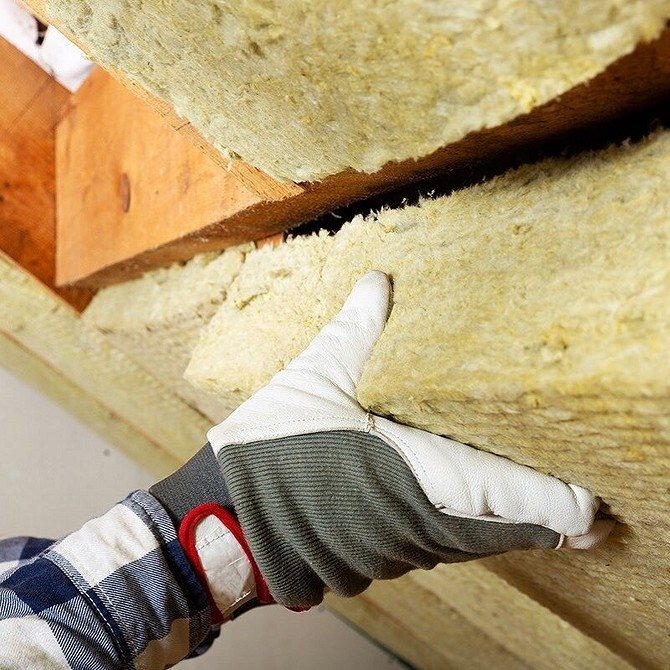

Features of floor insulation
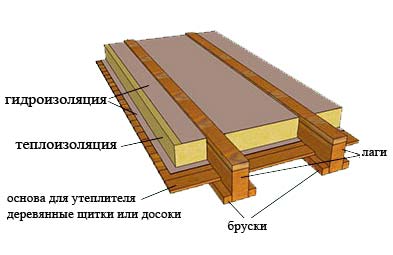

Floor insulation scheme.
Mineral wool should be used without fail in conjunction with other materials, among them there must be different membranes, vapor barrier films, etc. When choosing mineral wool, it should be remembered that the material that is made on the basis of fiberglass is capable of demonstrating increased fragility. In order to eliminate this disadvantage, some manufacturers add a number of chemical additives, for example, formaldehyde. But it has a bad effect on the human body. It is for this reason that one should prefer mineral wool made on the basis of basalt fiber - this material is completely safe.
Before the process of warming the floor of a wooden house, you should decide which type of material to prefer. Insulation can be represented by rigid mats, flexible plates and rolls. According to the standard, the classification is much broader, however, one of the above types of mineral wool can be used for high-quality and effective insulation.
The thermal insulation process is divided into 5 separate stages. The first stage involves the installation of the lower floor sheathing. To do this, you can choose a solid plank flooring, which is true for a house that is devoid of a basement; you can also choose a sand preparation, which is applicable in the case of a floor on the ground and a basement. The second stage of work involves waterproofing. This will eliminate the penetration of water during the period of snow melting or the spring rise of groundwater. The next step will be mineral wool flooring. In this case, the boards should be laid as tightly as possible to each other so as to avoid the formation of gaps. When unrolling the roll, the formation of unwanted gaps should be avoided. Further, the floors in a wooden house should be covered with a layer of vapor barrier, after which you can proceed to the installation of the finished floor. This should be done using special bars designed to provide an air gap between the insulation and the floorboards.
Differences between mineral wool
As we have already said, there are three types of mineral wool insulation. Each of them is made from different raw materials and has its own properties.
Glass wool
A material consisting of molten glass broken, dolomite, sand, soda, or limestone.
Benefits:
- Air permeability.
- Fire resistance.
- Elasticity, vibration resistance.
- Withstands low temperatures.
- Lower cost than other mineral wool.
Minuses:
- Short shelf life - 5-10 years.
- Shrinkage 80%.
- Strongly absorbs moisture.
- Causes itching or even an allergic reaction on contact with the skin.
As for the scope of application, usually it is mineral wool for insulating walls inside the house.
Slag
Produced from metallurgical waste. It is inferior in characteristics to other types of insulation.
- Does not provide adequate sound insulation.
- Cannot withstand strong heat. Does not burn, but cakes and loses its thermal insulation qualities.
- Does not tolerate temperature extremes.
- Protective clothing and a respirator are also required for mounting.
- Do not insulate damp rooms with metal fasteners, since under the influence of humid air, slags will contribute to corrosion.
- High hygroscopicity.
Plus - such a layer in the wall does not attract rodents and insects.Most often used on dry surfaces of temporary buildings or non-residential buildings.
Stone
Most expensive material. It is he who is usually chosen for outdoor work in private, including frame wooden houses. The production uses rocks. Thanks to this, the final product has a lot of advantages:
- High density, and hence strength.
- Fire resistance. Does not ignite at any temperature.
- Minimum shrinkage (5%).
- Long service life (up to 50 years).
- Provides excellent sound insulation.
- Almost does not break in the process of work, which happens with other types of products.
- Water vapor permeability. The fibers repel moisture.
Advantages and disadvantages of mineral wool for wall insulation
Let's summarize a little. The advantages of almost all types of mineral wool include several qualities:
- Non-flammability.
- Easy handling. Plates and rolls are cut with a knife or saw.
- Good noise and heat insulation.
- Simple installation.
- Long service life (5 to 50 years, excluding slag material).
- The need to work in protective clothing and a respirator.
- Additional vapor barrier may be required for fiberglass.
It is also believed that when heated, the insulation emits vapors that are harmful to health. Manufacturers say this is a myth. In addition, after installation, the layer with thermal insulation is closed with plasterboard, boards or other finishes.
Particles that enter the air when cutting products can be harmful. To do this, it is recommended to close the airways, and if the fibers get on the skin, wash them off only with cool or cold water. This is to prevent the pores from expanding and cutting dust from getting into them.
Overall, it is a modern, easy-to-use, effective material for protecting your home from high and low temperatures.
Do-it-yourself floor insulation with mineral wool
The technology for insulating a concrete or wooden floor is quite simple, so anyone can insulate a small room on their own.
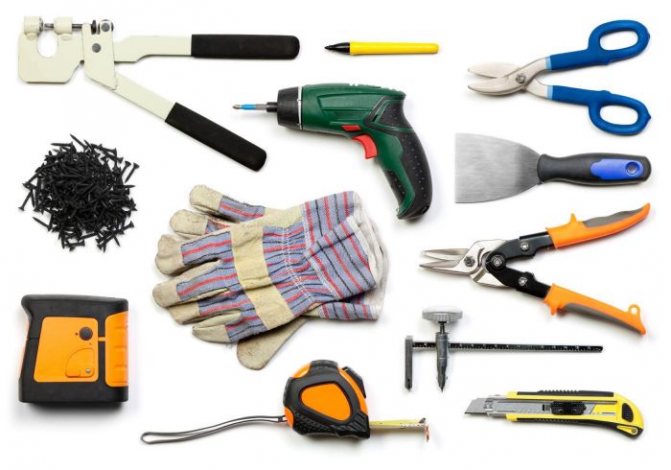

Tools required for the installation of mineral wool
To carry it out, you will need the following tools:
- tape measure for accurate measurement;
- gloves (preferably rubber, since mineral wool hairs tend to cling to clothing and body;
- construction stapler for fixing;
- a large clerical knife (this thermal insulation coating is quite thick);
- protection on the face: goggles and a respirator (as mentioned above, the mineral coating consists of hairs that crumble and cling to clothing during installation so that they do not get into the eyes and respiratory tract, it is necessary to protect these parts of the body);
- 6. screwdriver for installing the guides and the outer layer of the coating;
- 7. screws of various lengths;
How to choose mineral wool products
First, you need to pay attention to several characteristics:
- Thickness of mineral wool for wall insulation. The thicker the insulating layer, the higher its fire safety, sound insulation and strength. For internal partitions and frame structures, 5 cm mats are suitable.For facades - from 5 to 10 cm.
- Density (P). We wrote about it above. The rigidity of the structure and its ability to withstand loads depend on it. For facades, the indicator should be in the range of 100-125 kg / m³. If plaster is chosen as finishing, then 150 kg / m³. For interior partitions - 75-90 kg / m³.
- Thermal conductivity. The smaller it is, the better. In this regard, basalt and fiberglass products have proven themselves well.
- Water vapor permeability. The coefficient suitable for private buildings is that of stone wool. It is designated MU1. The larger it is, the better the product.
- Fire resistance. The level of fire resistance of fiberglass is 600⁰ С, of material from mountain alloys - 1000 ºС.
What else to pay attention to
If you plan to work outside the building, choose basalt slabs.When insulating from the inside is required, a fiberglass coating is also suitable. When purchasing, look at the storage conditions.
- If the product is even a little wet, it makes no sense to purchase it. Check that the packaging is free of gaps.
- Blocks and rolls should be under a canopy and not outdoors.
The most famous manufacturers of mineral insulation are Isover, URSA, Rockwool, Knauf. Their products are certified and quality tested.
Features of insulation with stone wool
Cotton wool is made from molten glass, slag, stone rocks. Special processing helps to obtain elongated fibers, which are removed from the centrifuge under the influence of centrifugal force when the threads are stretched. All elements are deposited in a closed volume. Subsequently, they are woven and additionally fastened with polymers, making up a single canvas. The resulting cotton wool is porous, its inner side is loose.
By the type of the main component of cotton wool, it can be:
- stone (or basalt);
- glass wool;
- slag.
Raw materials differ in structure:
Floor cotton wool is sold in rolls. It is suitable for insulation. To do this, you need to unwind the roll, cut it into the necessary pieces according to the size of the room.
In accordance with the conditions of use, the thickness of the cotton wool is 50 - 200 mm, less often a little more. When the material of the required thickness is not commercially available, it is allowed to lay several layers. For example, in the climate of the central part of Russia, usually the insulation layer should be 150 mm - this way you can use 3 layers of cotton wool, 50 mm each.
Before buying basalt wool, you need to pay attention to the following recommendations:
- inspect the packaging - if there are traces of damage on it, when a piece of the material itself is visible, it is better not to buy it, since the cotton wool could get wet and lose its characteristics;
- for a cold first floor, basement, you should choose a material with a thickness of more than 150 mm;
- in a harsh climate, you need to mount two layers of insulation or immediately acquire a two-layer material.
The thickness and density of the product are selected taking into account the climate and the purpose of the room. For relatively warm conditions, 50 mm is enough, and for year-round living, preference is given to a thickness of 200 mm.
How to properly insulate walls with mineral wool
Let's talk first about what can put all your work down the drain.
Mounting errors of mineral wool boards
- Lack of surface preparation. It should be flat, clean and treated with an antiseptic (if it is a tree).
- Carrying out work during precipitation or leaving finished work without rain protection.
- Insufficient adhesive application. Correct when it is distributed over the entire surface, including the perimeter. The most suitable adhesive is polyurethane foam or dry mix. The first products are easier and faster to work with, but slightly more expensive. Both products are resistant to external influences and guarantee good adhesion.
- Unfilled seams between insulation parts. They can only be closed with inserts of the same material. The maximum clearance is 2 mm.
- Intersection of slabs in window and door corners. There should be no joint in these places.
- Lack of mechanical fasteners. Anchors and dowels are used as additional connections for heavy sheets. The optimal amount is 3-4 pieces per piece (two at the corners, 1 or 2 in the center).
- Smooth mounting, joint to joint. Masters advise to install the elements in a checkerboard pattern - this way it is easier to avoid cracks in the structure.
These are the main mistakes people make when doing thermal insulation at home on their own.
Instructions for insulating the walls of the house with mineral wool outside
You will need a metal profile or timber to create the lathing, accompanying tools for building the frame, a knife or saw, fasteners and a membrane film for vapor barrier. There are two methods. Let's consider one of them. The work is carried out in several stages.
- Surface preparation. It is necessary to remove all old layers of plaster and other finishes from it, clean off dirt and mold, carry out processing and remove all irregularities with a primer.
- Installation of the frame.After the primer has dried, mount the guides at a short distance from the facade - about 10-15 cm in increments of 60-100 cm, 1-2 cm less than the width of the block or roll.
- A film is placed under the first layer - the smooth side to the plate and the vapor-absorbing one inside. It is attached with double-sided tape or a stapler.
- The first layer of cotton wool is attached on top. Usually a softer one is chosen so that it hides depressions or bulges if they remain after alignment. Plates are laid from bottom to top, and rolls - from top to bottom.
- Further, more rigid elements are mounted. For reliability, they can be fixed with a construction stapler or mushroom dowels.
- Another layer of vapor barrier is placed on top (the film is not stretched), lathing and cladding.
In the case of fastening under the frame, it is important to know in advance the size of the mineral wool insulation for the walls in order to correctly calculate the distance between the profiles.
Thermal insulation of the floor with mineral wool implies the creation of a complex structure to protect the floor from external influences. A resource with a fibrous structure is distinguished by high heat and sound insulation properties and ease of use. Knowing the features of the material and the installation technology, it is easy to perform the thermal insulation of the floor with mineral wool with your own hands.
The process of warming floors
Floor insulation with mineral wool occurs in several stages:
- Subfloor surface preparation.
- Insulation flooring directly.
- Installation of pre-finishing coating.
Let's analyze the whole process of work in stages.
Preparation of the rough base
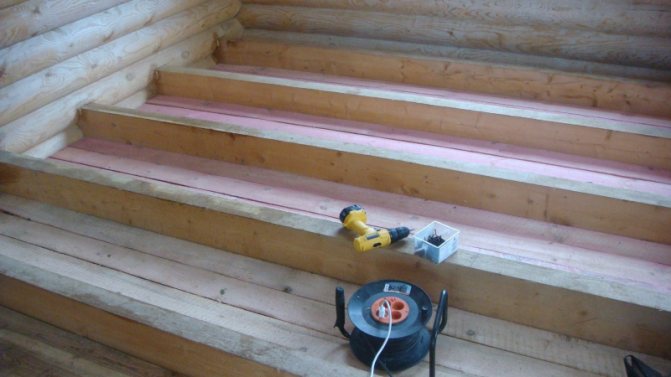

It is very important to repair the rough base, lay waterproofing
If you are going to insulate old floors, then you will have to completely remove all flooring from them, exposing the floors down to concrete floor slabs or rough wooden floors.
Then we carefully examine their surface for cracks, holes, cracks, etc. All holes and problem areas found should be repaired with putty, plaster or sealant.
Related article: How to make a bench: original ideas (drawings, photo reports)
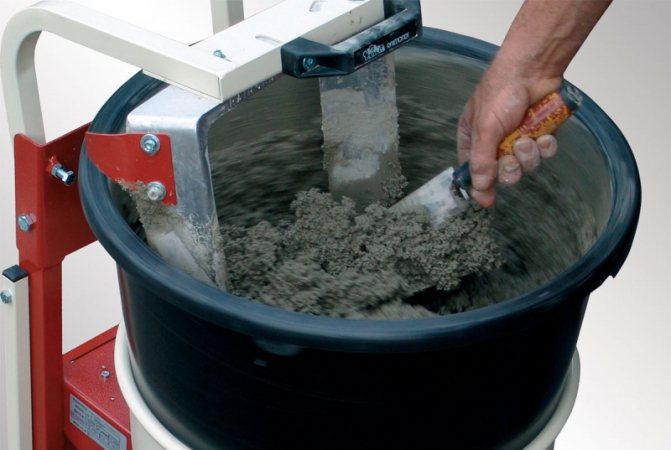

Next, you should check the bearing surface for a horizontal slope, dips and bumps. If the defects are not so significant, they can be corrected with putty or plaster.
If the elevation differences are too large, then you will have to resort to a more radical method - pouring a leveling concrete screed. To do this, you can use ready-made dry mixes sold in hardware stores, or prepare a sand-concrete mortar with your own hands.
If the maximum thickness of the screed is expected to be less than 3 cm, then coarse sand should be used as a mortar filler.
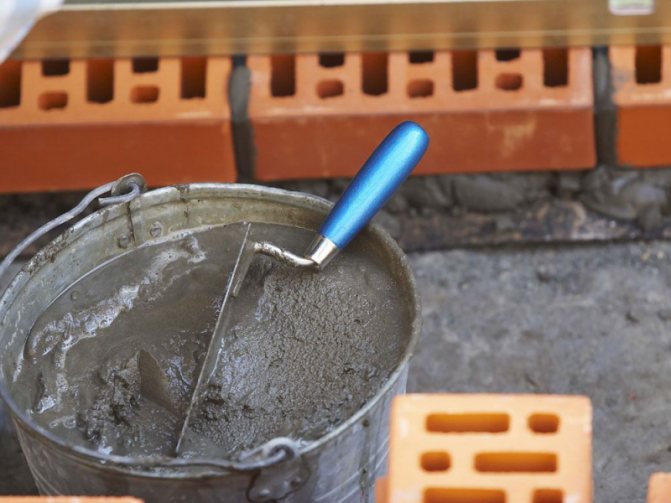

Gravel can be added to add strength to the mix.
If the leveling layer of the concrete screed is more than 3 cm, then it is recommended to use fine gravel or crushed stone to increase the strength.
The table shows the proportions that should be observed when mixing concrete mortar of the M-100 brand, which is most often used for floor screed.
Concrete proportions M100:
| Cement used | Mass composition *, kg | Volumetric composition *, l |
| M400 | 1 : 4,6 : 7,0 | 1 : 4,1 : 6,1 |
| M500 | 1 : 5,8 : 8,1 | 1 : 5,3 : 7,1 |
* Values are in order - cement: sand: crushed stone
Waterproofing
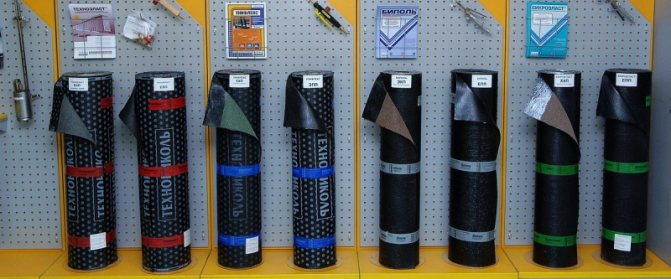

Roofing material and its analogs are glued with special mastics
The device of a moisture-vapor barrier layer is a very important stage of work. The fact is that mineral wool is extremely afraid of moisture. When wet, it loses its heat-insulating properties and no longer restores them. Moreover, moisture that has got inside it remains inside for a long time, causing the multiplication of mold and fungi, passing to the floors and walls.
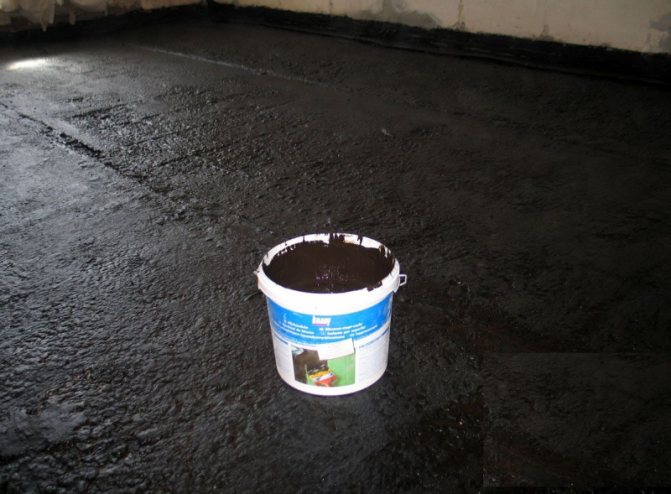

Apply the coating waterproofing with a brush or roller.
To do this, you can use roll waterproofing - roofing felt or its modern counterparts. Roofing material sheets are glued to the floor surface using polymer or bituminous mastics.
On the modern market, there are also self-adhesive types of waterproofing, for example, "TechnoNIKOL". The canvases are laid with an overlap of at least 10 cm, and the seams are carefully coated with mastic. For greater reliability, waterproofing can be laid in two or three layers, so that the joints of the canvases of different layers do not coincide.
Related article: Kitchen interior in a private house: how to decorate the interior in the country with your own hands
For concrete subfloors, a coated waterproofing can be used. It is a polymer or bitumen mastic with increased fluidity. For their application, paint rollers or brushes are used. For more information on the materials, see this video:
Mastics fill all the smallest cracks and pores of concrete, blocking the access of moisture particles from the lower room.
Installation lag
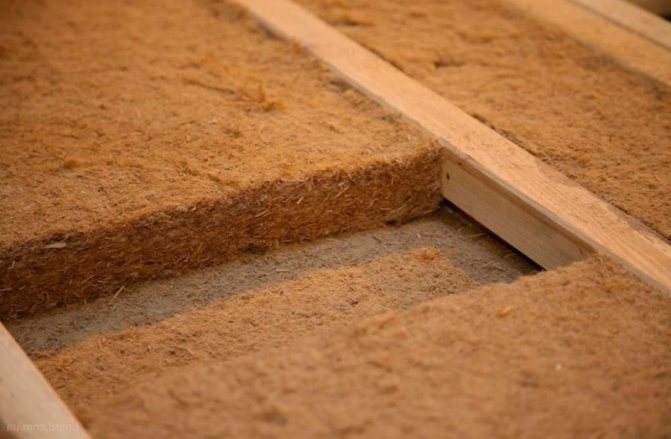

Mineral wool must be laid between wooden logs, which will protect the material from creasing
Since the mineral wool cannot be crumpled, care should be taken to create a protective barrier between it and the topcoat.
So that the flooring does not put pressure on the insulation, we install wooden logs over the entire surface of the rough floors, which will serve as a support for the finished flooring.
To do this, we take blocks with a section of 5 x 6 cm and fasten them to the concrete base using dowel-nails, and to the wooden base - with nails or self-tapping screws.
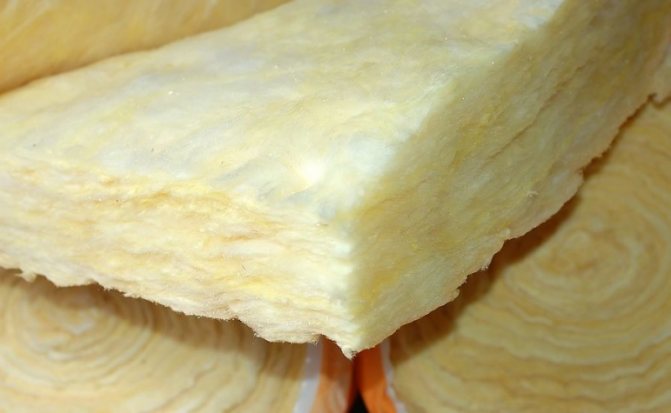

The step between the joists depends on what material you are going to use for the top flooring.
For a plank floor of "fives" or "forty", the distance between the logs of 80 cm will be quite sufficient.
For plywood, OSB or "inch" boards, the distance should be reduced to 40 - 60 cm.
Nuances of floor insulation with mineral wool
When arranging the floor in a private house, fiber insulation is used in the following cases:
- for warming the base above the basement floor. The basement space is most often not heated, and under the influence of cold air from below, the floor slabs do not cope well with the task of saving heat in the room. As experts note, the cold intensively enters the house through the non-insulated base, which causes the leakage of a considerable part of the thermal energy from the room;
- for heat and sound insulation of interfloor floors. Mineral wool in a multi-layer structure of floors between floors is positioned as the best option for thermal insulation. The use of insulation with a fibrous structure allows you to maintain an independent microclimate in rooms that are located at different levels of the building. The high sound absorption properties of this material contribute to the creation of a reliable barrier against the spread of sound effects, which often occur during the operation of household appliances or utilities;
- for arranging the attic floor. The roof space is constantly exposed to aggressive climatic conditions. Seasonal frosts or heat, dampness and wind loads negatively affect the condition of the attic floor overlap. To protect the structure from external influences, it is recommended to equip a complex barrier made of mineral wool and means of hydro and vapor barrier.
Mineral wool is available in rolls, slabs and flexible mats with various technical characteristics. Rolled products provide for low rigidity, the width of the products is 0.6 and 1.2 m, the length is up to 10 m. The material is relevant for arranging large areas, as it minimizes the number of joints in the heat-insulating layer. For the installation of rolls, a crate is made, the insulation is laid in two layers.
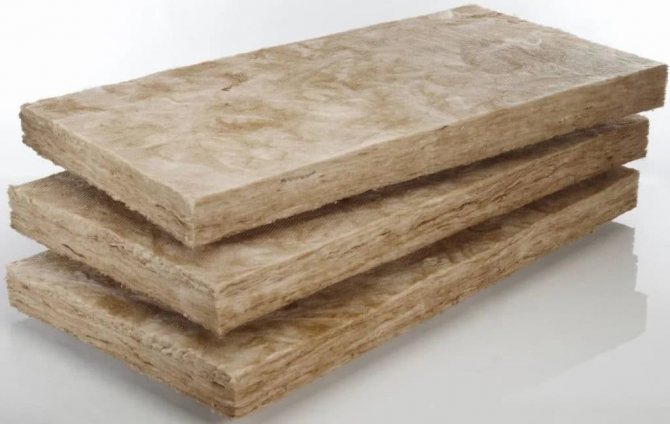

Minvata in slabs
Plates of mineral fibers with a dense structure are mainly used for arranging a subgrade. The material is laid without lathing and filled with mortar. The mineral wool in the slabs contains hydrophobized components.One side of the product is more rigid than the other. The manufacturer's instructions indicate the installation requirements, taking into account the characteristics of the product. The factory packaging of tile insulation is designed for arranging an area of 1-4 m² in one layer. Dimensions: 50x100 cm.
Insulation technology
Thermal insulation of the base is carried out in a clear sequence. Even small deviations from the installation steps can cause heat leakage and lead to the loss of mineral wool properties. The stages of installing a floor insulated with basalt wool are as follows:
- Preliminary preparation.
- Installation of waterproofing.
- Installation of thermal insulation.
- Arrangement of a vapor barrier.
- Rough finishing under the topcoat, reinforcement.
- Finish coating.
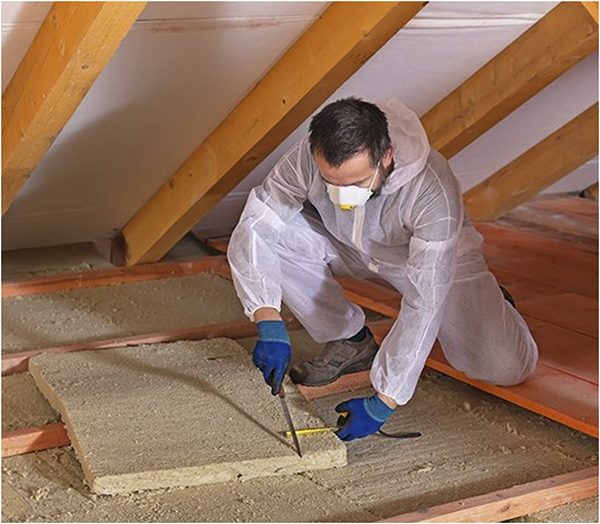

Installation rules and features
Masters recommend adhering to some rules:
- You can use rolled cotton wool, as well as mats or slabs. Plates will significantly facilitate the work, will minimize possible gaps.
- To level the floors, to organize the screed, expanded clay is suitable. It not only makes the surface smoother, but also provides additional thermal insulation.
- There is no need to try to save on thermal insulation by purchasing cheap material in questionable stores. This provokes many problems in the future - too strong shrinkage, loss of qualities, the formation of mold, fungi. It is better to choose mineral wool from reputable manufacturers.
- In order to achieve maximum heat preservation results, you should carefully study the rules for laying, the specifics of the material. This helps to choose the right product, taking into account the characteristics of the room. A good way out is to get advice on choosing from a professional.
Pros and cons
The leadership of the mineral wool environment of the floor insulation means in the house is due to the following points:
- high class of incombustibility. An insulator of this category is an obstacle to the spread of fire sources. Varieties of the product are characterized as a means of additional fire protection for structures for various purposes. The material is relevant, including when arranging fire hazardous structures. For example, the working temperature range of stone wool varies up to + 1000 ° C;
- low coefficient of thermal conductivity. The fibrous structure provides an air gap that prevents the transfer of thermal energy. Subject to the installation technology, this type of insulation contributes to maintaining a comfortable microclimate in the room;
- high rates of noise reduction. The composition is able to actively resist the propagation of sound waves. Due to the decent characteristics of sound insulation, this insulating agent is applicable in various structures, including a roofing pie, the device of interfloor ceilings or engineering infrastructures in the house;
- frost resistance. The material is not exposed to negative temperatures, it is able to provide maximum protection against heat loss, regardless of the climatic conditions of the area;
- vapor permeability. The composition compares favorably with other insulators by the ability to "breathe";
- inertness to chemical and biological threats. Insulation based on mineral fibers does not react to the effects of active chemical compounds, pathogens;
- ease of installation. It is convenient to fill any volume of space with mineral wool, since the composition has a low weight with sufficient thickness;
- profitability. The material is sold in an affordable segment, which is due to the simplicity of the manufacturing process.
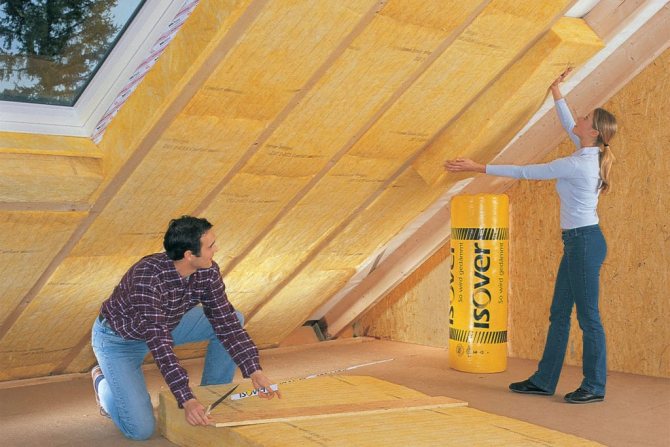

It is convenient to fill any volume of space with mineral wool, as it is lightweight and thick enough
When planning thermal insulation of the floor with mineral wool, you should also know the disadvantages of the resource:
- impressive volume in height. The thickness of the insulation products is of considerable importance when organizing the frame from wooden logs, this argument negatively affects the overall height of the floor structure;
- exposure to moisture.Not all varieties of mineral wool have moisture resistance properties. For example, glass wool and slag wool lose functionality under the influence of a humid environment. Compositions of volcanic rocks - basalt - are highly resistant to moisture;
- certain difficulties in installation. To work with glass wool and slag wool, you must use special clothing and accessories. It is required to exclude direct contact with the composition of small particles with sharp ends, which can affect the skin, respiratory tract and eyes.
A big minus in the piggy bank is the insecurity of certain types of mineral wool due to the presence of chemical components in the composition. Under the influence of high temperatures, the release of compounds harmful to health and the environment is observed. At the same time, the basalt variety of mineral insulation is quite safe and is used when arranging the floor and other structures in the house.
Resources based on volcanic rocks are characterized as effective heat and sound insulating means. In addition, the stone insulator provides high fire resistance, resistance to mechanical stress and moisture. The only drawback of basalt insulation is the relative high cost compared to slag and fiberglass.
The need for vapor barrier when insulating mineral wool
The construction of a residential building or its renovation is a long-term work, the result of which should be quality.
Vapor barrier is a film that interacts with other structural elements, stopping the formation of condensation. Usually people spend it during a major overhaul.
Hydro-vapor barrier helps to increase the operational life, because it prevents moisture from penetrating into the insulated layer.
In winter, vapor barrier is especially important, since the temperature in the room and outside is seriously different - this leads to the formation of steam in the house, which must leave the room without any obstacles. Basements, attic, first floor, interfloor partitions need steam isolation most of all.
The walls do not really need it if they are insulated from the outside. A sign of this may be that the surface is not breathable:
- surface covered with non-porous sheathing;
- a thick, continuous layer of waterproofing is applied;
- wall made of bricks.
There are other situations where vapor barrier is not necessary. From all this, it can be concluded that walls, floors and ceilings insulated with mineral wool do not necessarily need protection against condensation. Vapor barrier is necessary only in cases where the room is in constant contact of a warm air flow with the surface.
Hydro-vapor barrier is one of the most important factors when insulating a residential building with mineral wool. This fence will help you to overcome the humidification of walls, floors or ceilings with condensation (transition of a substance from a gaseous to a liquid state) when warm air comes into contact with the surface.
One of the main advantages of a room vapor barrier is that it can be done independently, without having any specific abilities and skills. But what is mineral wool? This article will consider this material intended for warming a room, the reason for the need for vapor barrier outside and inside the room.
Mineral wool and its properties
The main indicator that shows the quality of the insulation is the coefficient of thermal conductivity of the material. Minvata is a fibrous insulation material. In such heaters, the thermal insulation qualities depend on the specific water content in the material (moisture content).
If any liquid gets in, the mineral wool absorbs it, pushing the air out. With an increase in the amount of moisture, the thermal insulation properties of mineral wool fall.The main disadvantage is that trapped liquid is difficult to remove from the material. Mineral wool can take up 2/3 of the liquid from its total weight, but its performance deteriorates.
Mineral wool
But despite the excessive accumulation of water, mineral wool has become widespread. In rooms where there is no constant contact with water, the use of this insulation is recommended.
Before insulating this material, it is important to cover the surface of these places with a special film that protects it from any moisture, but at the same time allows an air flow to pass through:
- brick, frame walls;
- the outside of the walls made of wood;
- floors;
- interfloor floors;
- the top element of the building (roof).
Mineral wool can be made from various raw materials: glass, stone, or slag. Today, mineral wool is very popular in construction, in particular, room insulation.
In particular, walls and ceilings are insulated to it. Also, mineral wool is used to insulate furnaces, pipelines, which have a high temperature, since this material is non-combustible.
Additionally, mineral wool has sound insulation properties.
Mineral wool can contain a potential hazard to the human body. But in fact, it contains fibers that are permissible for health. It is best to use it in a place that is regularly ventilated, or use ecowool. Ecowool consists of environmentally friendly materials.
Vapor barrier
The heat-insulating "pie" must necessarily let the air pass through in order for the room to "breathe". Therefore, the hot air flow very slowly leaves through the fibers of the insulation. With the correct installation of insulation, this ability should increase from room to street.
There should be two centimeters of ventilation space under the decorative finishing of walls and ceilings. Mineral wool is attached between the supports.
At the beginning, it is necessary to lay a wind and waterproof barrier, which will protect against precipitation and powerful gusty winds.
Partitions between rooms and interfloor floors need to be insulated using a different method, because air with moisture can be impregnated with mineral wool or ecowool from different sides, therefore, a vapor barrier is required on both sides to maintain thermal and technical properties.
In this case, the remaining moisture passes through the ventilation gap, which is located under the facade.
There are situations when hydro-vapor barrier is not required at all when insulating with mineral wool or ecowool.
Both for waterproofing and vapor barrier, it is important to carry out a number of preparatory work:
- cleaning the coating from various dirt and dust;
- carrying out the primer. This is necessary to seal the cracks in the surface;
- drying the coating.
Vapor barrier of walls in the room
Types of vapor barrier
Vapor barrier is divided into two types:
- Roll. Rolls are rolled from the bottom of the item to the top. Further, they are fixed with slats made of wood in a horizontal position. The space for ventilation is located between the inner lining and the vapor barrier. This hole should be about five centimeters. After the performed procedure, check that everything is fixed firmly.
- Leafy. To work with sheet material, at the beginning, you should install a frame from a profile. Sheets must be mounted in this frame. Self-tapping screws or nails will help you with fixing the sheets. Sections of joints must be covered with polyvinyl chloride (PVC film). The sheet of the vapor barrier layer lies in the inner area to the place that you want to insulate.
Installation of vapor barrier on the floor
Rules for fixing the vapor barrier layer
The reliability of the fastening depends on screws or nails. Regardless of the place of the room, hydro-vapor barrier is established by general principles.
For the integrity of the vapor barrier of the coating, it is important to apply the layer in a continuous layer to avoid any holes or crevices. It is more desirable to fasten the sheet with a furniture stapler. With the help of this construction tool, the vapor barrier film is attached to the surface of the walls to be insulated and a certain overlap tightly.
The vapor barrier layer is laid with an overlap of individual rolls or sheets (depending on the type of vapor barrier) of 10-12 centimeters.
In places with openings of doors and windows, the sheets must be glued; this can be done with the help of an adhesive tape specially designed for this situation.
But it is not necessary to stretch the vapor barrier film, otherwise, due to sudden changes in air temperatures, it will not be able to maintain its integrity. It is attached with a margin of three centimeters.
Hydro-vapor barrier of a ceiling insulated with mineral wool or ecowool is also performed with an overlap of rolls or sheets. To protect the ceiling from steam and moisture, it is necessary to cover the inner and outer parts of the room with waterproofing vapor barrier layers.
The outer part of the building should consist of three layers:
- parainsulating;
- heat insulating;
- re-vapor barrier.
This extends the service life and eliminates the possibility of condensation in your room.
For floors that are made of reinforced concrete, in particular, protection from steam and moisture is required. Otherwise, sudden changes in air temperature will lead to the appearance of steam, which can cause fungus or mold on the ceiling.
Outcome
Vapor barrier is an important element that will bring comfort and coziness to your home. Typically, a vapor barrier is installed together with waterproofing and thermal insulation. When working on your own with the material, you should follow several rules and nuances. The choice is yours. This article could answer the question: is a vapor barrier needed for insulation with mineral wool?
Source: https://teplota.guru/paroizolyatsiya/neobhodimost-paroizolyatsii-pri-uteplenii-mineralnoj-vaty.html
Material selection criteria
The key criterion for choosing mineral wool for floor insulation is the density parameters of the material. To create a multi-layer base structure when arranging residential premises, roll products with characteristics of 35-40 kg / m³ are a priority. If you plan to use the insulator in a tiled version, choose a model with parameters up to 90 kg / m³. Rigid blocks are also used in industrial facilities.
For insulation of a wooden floor, mineral wool in rolls is mainly chosen with the calculation of laying in 2 layers. In some cases, flexible fibrous mats are preferred. The thermal insulation material must be completed with a vapor barrier membrane and a hydro-barrier in the form of a film.
For concrete floors, preference is given to slabs of appropriate density. If laying under a screed is to be used, rigid models with a density of 150 kg / m³ with the lowest possible coefficient of thermal conductivity are used.
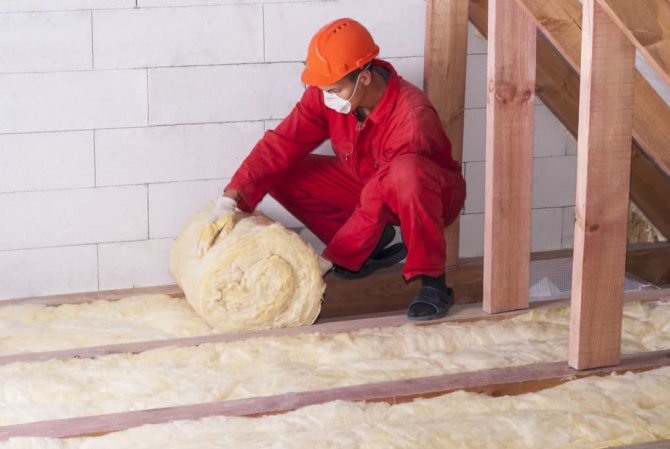

For insulation of a wooden floor, mineral wool in rolls is mainly chosen.
Laying mineral wool on a concrete floor
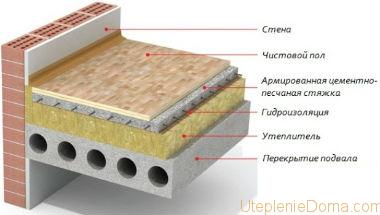

The method of laying mineral wool under the screed.
Concrete has a porous structure. It absorbs moisture like a sponge, and when it gets wet, it quickly freezes. Therefore, along with floor insulation with mineral wool in a private house, you need to do high-quality waterproofing. The solution is poured:
- on the ground;
- on a concrete floor;
- on a wooden floor.
In all cases, the laying of mineral wool on the floor is carried out in the same way. Only when pouring concrete over the ground, first you need to create a thin leveling layer of the screed. Method of work:
- waterproofing is laid (it is allowed to use materials with vapor barrier characteristics);
- mineral wool is placed for floor insulation;
- the second layer of waterproofing is spread;
- the main screed is poured.
A gas ceramic home heater works independently from any centralized networks. It can also be used for cooking, like a tile.
Read more about quartz heaters for an apartment here.
But in fact, mineral wool for the floor under the screed is rarely used; more often, ordinary or extruded foam is used for this. Polymers are moisture resistant and easier to work with. At the same time, there is stone wool with a very high density (up to 225 kg / m3), which is produced specifically for laying under a layer of mortar. But for the price, not everyone can pull such insulation.
It is fully justified to use mineral wool when insulating a concrete floor along the logs. In this case, you can take low-density thermal insulation, moreover, it is cheaper. After the guide bars are fixed, the work is carried out according to the wood floor insulation scheme. Only in this case concrete will be used as a rough coating.
Technology and stages of work
The multi-stage process of arranging the floor thermal insulation is carried out taking into account the peculiarities of the technology, which implies a clear work algorithm.
Materials and tools
Before starting work, you must prepare the following set of tools and accessories:
- roulette;
- large clerical knife, scissors;
- construction stapler;
- scotch tape with aluminum coating.
Tools for dismantling old flooring and repairing / building a new sandwich base structure:
- screwdriver;
- nail puller;
- a hammer;
- pliers;
- a set of hardware.
You should also take care of the availability of protective clothing, respirator, glasses. It should be borne in mind that rubber gloves will be needed to work with glass wool and slag wool, other processes are performed in simple cotton gloves.
Preparatory work
The process starts by removing the old floor covering. If you have to dismantle the finishing layer, which you plan to use again, it is advisable to carefully remove the elements and mark for ease of re-installation. Further, the surface of the subfloor is cleaned from debris and dust.
Surface leveling
If, when checking the rough base, defects are revealed in the form of irregularities, cracks, chips or depressions, a set of work is performed to eliminate them. This is necessary to ensure a tight fit of the insulating layer to the plane being equipped. After eliminating the flaws in the concrete base, they begin to level the surface with a screed. The modern construction industry offers a wide variety of alignment methods, among which it is not difficult to choose the best option depending on the budget.
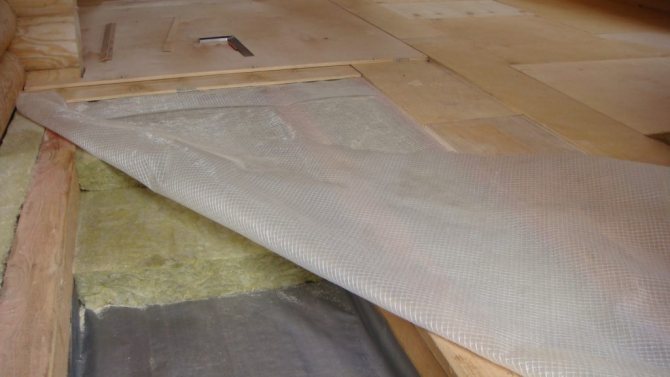

Laying the vapor barrier
Vapor barrier
After the screed has completely dried to protect the insulation, the concrete base is decorated with plastic wrap for vapor barrier. According to experts, a special membrane is a priority for these purposes. The product is a thick canvas made of several layers of waterproofing materials. The vapor barrier is carefully leveled and pressed tightly against the screed with an overlap on the wall, taking into account the height of the guides and mineral insulation.
Installation of guides
Thermal insulation of a wooden floor along the logs allows you to lay the mineral wool tightly and evenly, besides, the pace of work is accelerated. To properly install the guides, the following points must be considered:
- the working interval between the lags depends on the parameters of the insulation and the scale of the space being equipped;
- preliminary calculations should be carried out to ensure the identity of the intervals between the lags;
- the maximum distance between the guides should not exceed 1 m.
Also, gaps between the guides and the perimeter of the wall are not allowed.
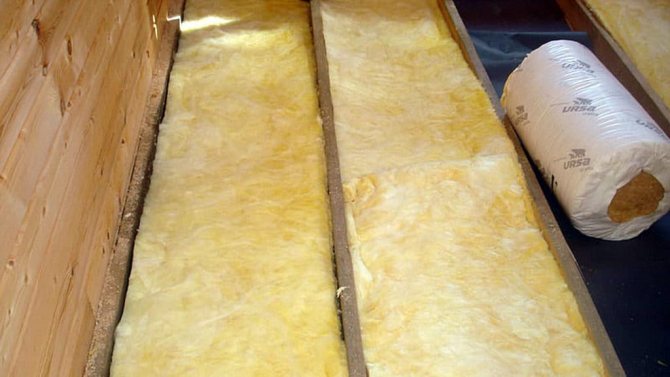

Laying mineral wool between lags
Installation of mineral wool
When preparing the insulation, the material is cut with a margin of 1 cm along the perimeter in order to exclude gaps between the insulator and the lags during installation. Mineral wool is laid in 1 or 2 layers. In this case, the second layer of the coating is laid so that the joints of the lower layer are closed with the upper one according to the brickwork method.
Waterproofing
Since the mineral insulator is susceptible to moisture, the next step is to protect the coating with the selected waterproofing agent. This layer is analogous to a vapor barrier and consists of dense polyethylene.
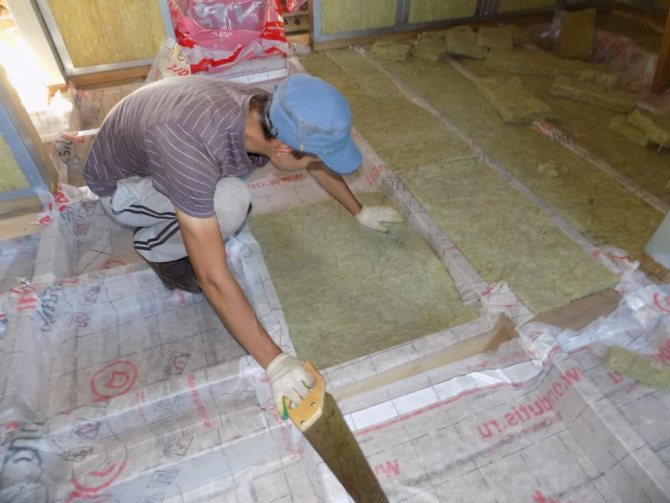

Laying the finished floor
Wooden floor
For a wooden floor, the installation technology of basalt insulation is somewhat different from the one described above. The main specificity is the presence of logs on which a wooden decorative covering is installed.
First, a rough plank floor is mounted on the cranial bars. It will serve as the basis for the installation of waterproofing and insulation. Since the load on the surface of this floor will be minimal, you can use boards up to 2 cm thick.
Then you need to install a waterproofing film. It should be located not only on the boards, but also on the logs. Uncovered areas are not allowed. The joints are insulated with special tape. If bituminous material is used as waterproofing, the seams are covered with mastic.
Mineral wool for floor insulation should be located between the logs. It fits snugly against their side surface, preventing gaps.
After checking the absence of gaps and the tight fit of the heat insulator to the surface of the subfloor, you can start installing the vapor barrier film. Installation of a completely sealed material is not allowed - if moisture enters the structure of basalt wool, it must be ensured that it escapes through the vapor barrier layer and the ventilation gap.
The latter is required. For its formation, spacer strips are installed on the surface of the lag, on top of which the main floor covering is attached.
Such floor insulation with mineral wool is optimal. This is especially true for buildings with increased fire safety requirements. Therefore, basalt insulation is most often used for thermal insulation of the floor and walls of baths and saunas.
To effectively insulate the floor in any house or apartment, stone wool is an excellent option. This is one of the types of mineral wool. If you understand the rules for warming the floor with stone wool, carry out all the manipulations with high quality, then the material will last a long time, in accordance with its characteristics.
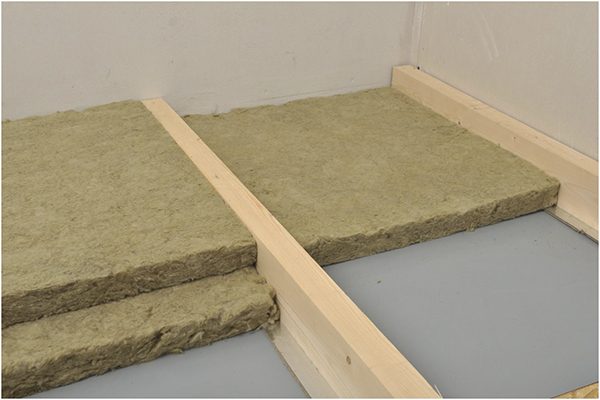

Warming with cotton wool
